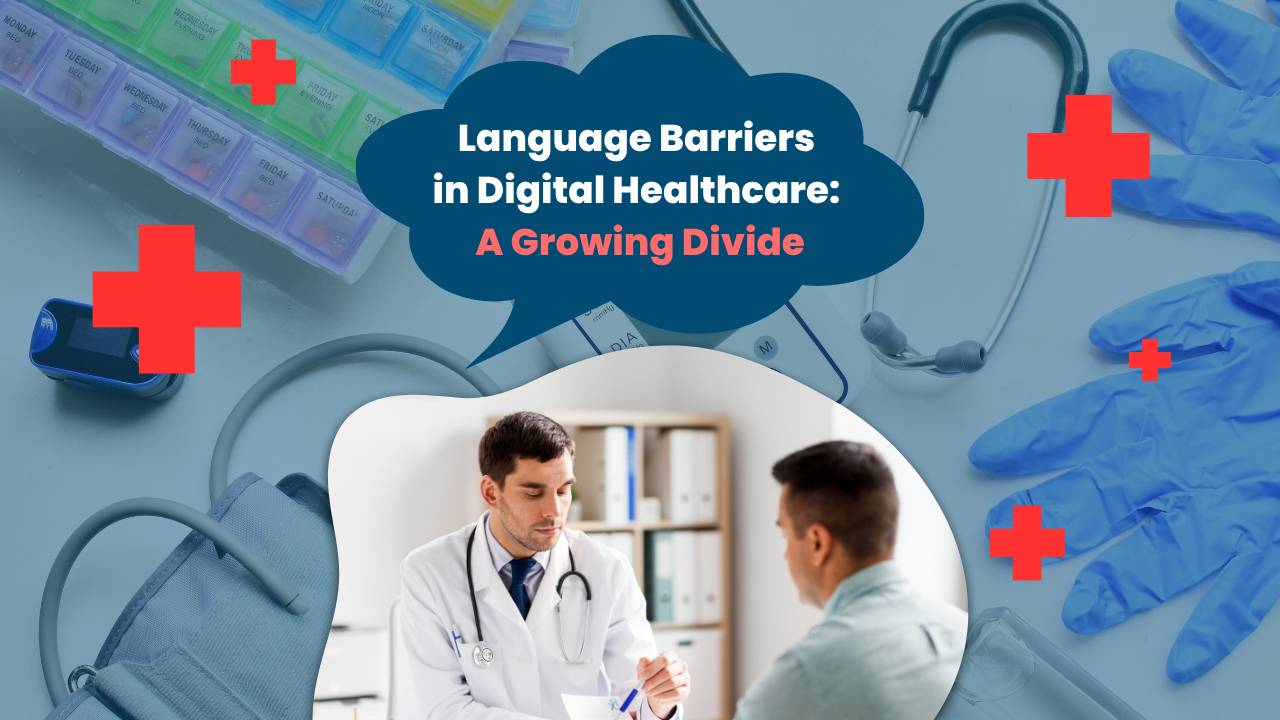Language Barriers in Digital Healthcare: A Growing Divide
Oct 28, 2025
By: Faiza Rafique Khan | Seasonal Public Relations Intern | Digital4Good
As United States healthcare systems become increasingly digitized, services like appointment booking, test results, insurance information, and doctor communication are moving online. Despite benefits such as reduced costs and increased efficiency, not everyone is benefiting equally from this shift. Older adults in marginalized communities are particularly at risk of being left behind, especially those with limited English proficiency.
This article explores who is impacted by the shift, how it affects their access to healthcare, and how we can work toward equitable solutions.
Who Is Affected?
Digital tools such as MyChart, patient portals, and telehealth platforms have improved healthcare for many, but for those who struggle with English or technology, they’ve added an extra layer of difficulty. Important updates go unread, appointment reminders are missed, and questions go unasked because portals feel intimidating.
The digital healthcare shift disproportionately affects the following populations:
- Immigrant and refugee populations
- Older adults of South Asian, Middle Eastern, or Hispanic descent
- Patients in low-income communities
These individuals face obstacles such as:
- Language barriers that prevent them from navigating medical portals
- Low digital literacy, making technology feel overwhelming or confusing
- Cultural disconnects between standard healthcare communication and lived experiences
How It Affects Care
According to research by Al Shamsi et al. (2020), language barriers in healthcare increase the risk of medical errors and contribute to poorer health outcomes. Even when interpreter services are available, they are often underused or insufficient.
These challenges can lead to:
- Missed appointments or incorrect bookings
- Delayed test follow-ups or treatments
- Misunderstanding of medical advice or insurance changes
- Reduced confidence in seeking help or asking questions
When patients can’t independently manage their own healthcare, they must often resort to dependence on younger family members. Furthermore, clinics may spend more time resolving communication gaps than health concerns, potentially delaying necessary care.
A Path Forward
The good news is this problem is solvable.
If given proper support, many of these at-risk individuals are fully capable of navigating and engaging with digital healthcare tools.
Koehle et al. (2022) point out that digital health equity depends on more than just access. It requires trust, usability, and inclusive design. This means tools must be built with the needs of all communities in mind: for example, ensuring healthcare platforms align with Web Content Accessibility Guidelines, offering content in multiple languages and dialects, and implementing digital literacy training programs.
Through culturally sensitive education, translated resources, and patient-centered design, we can create tools and training that meet people where they are.
A Digitally Inclusive Future
At Digital4Good, we believe that digital wellness should be accessible to everyone regardless of age, language, or background. As we continue to push for more inclusive and equitable digital spaces, your voice matters. Whether you're a healthcare provider, designer, educator, or simply someone who cares, you can help advocate for digital tools that reflect the diverse needs of our communities.
Let’s make sure no one gets left behind in the digital shift. Learn more about how you can support inclusive tech initiatives at Digital4Good.
Stay connected with news and updates!
Join our mailing list to receive the latest news and updates from our team.
Don't worry, your information will not be shared.
We hate SPAM. We will never sell your information, for any reason.


